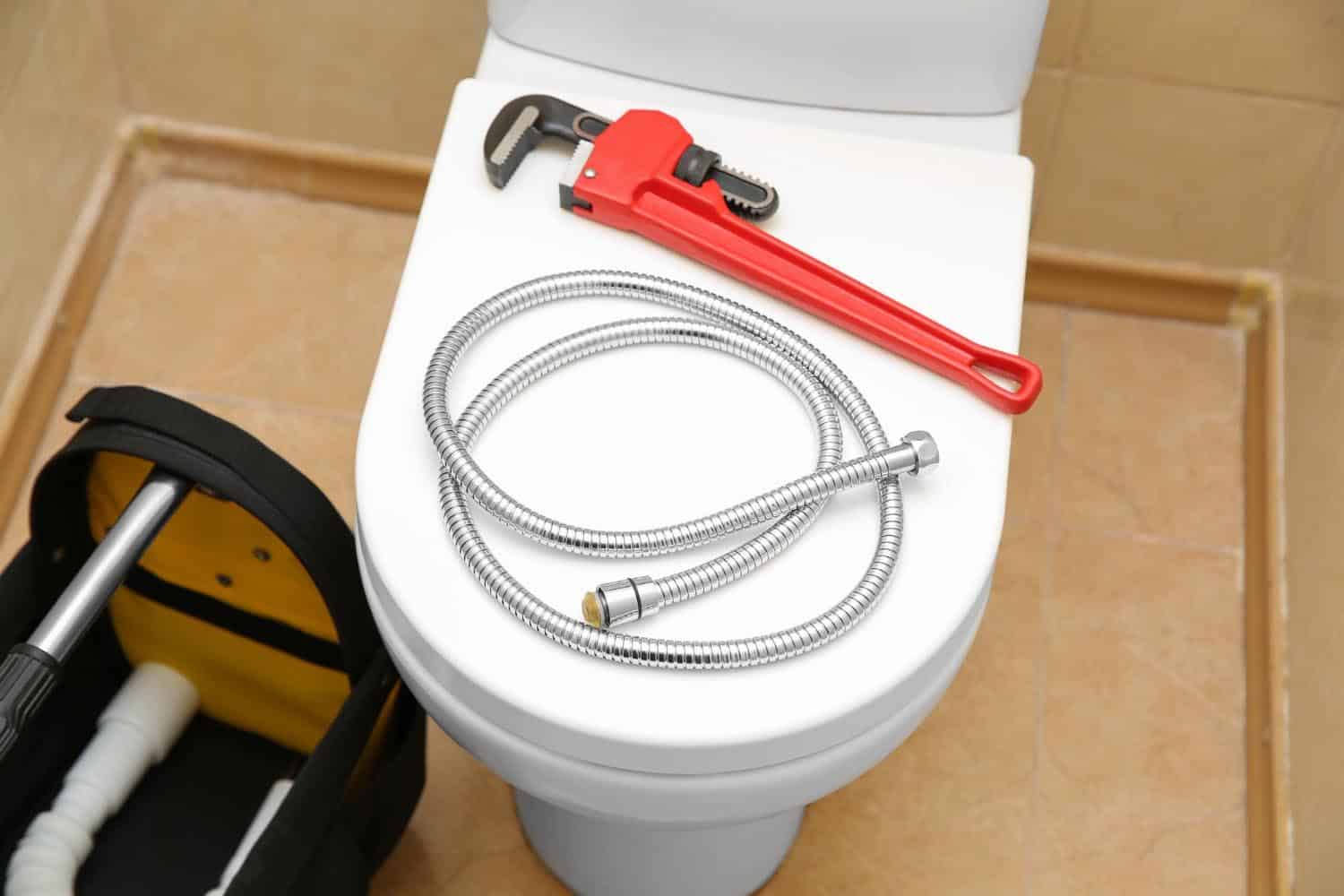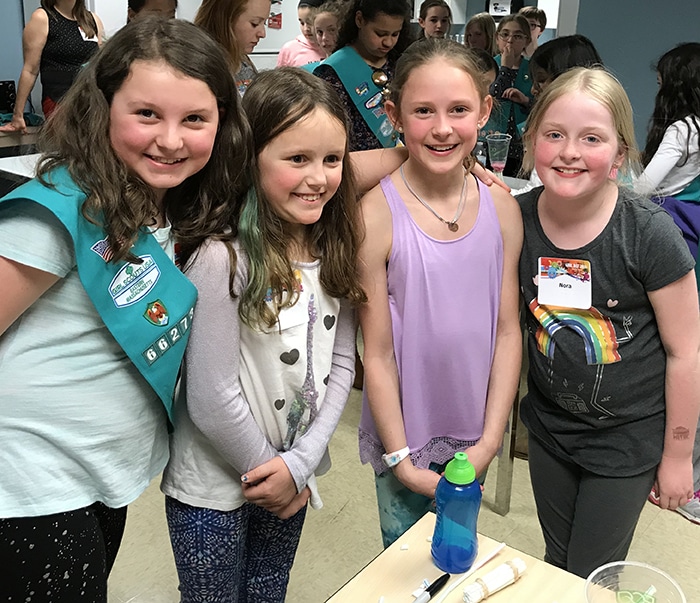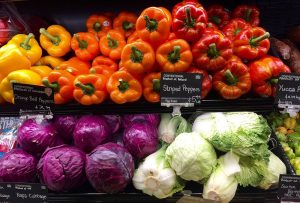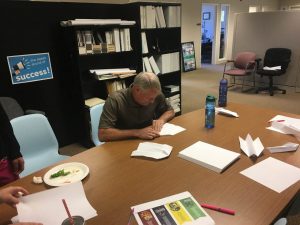Clogged toilets and backed up sewer systems — and the costly repairs associated with these issues — are problems that everyone wants to avoid, homeowners and DPW departments alike. And learning what is appropriate to flush is critical to keeping the pipes flowing.
 While there are many obvious things not to flush down the toilet, an astonishing amount of non-flushable wipes, paper products, dental floss, and other dispensable hygiene products are flushed down toilets every day. This has contributed to cities and municipalities dealing with chronic clogged sewer systems and expensive wastewater treatment maintenance, not to mention homeowners who face the inconvenient problem of having a toilet back up in their home.
While there are many obvious things not to flush down the toilet, an astonishing amount of non-flushable wipes, paper products, dental floss, and other dispensable hygiene products are flushed down toilets every day. This has contributed to cities and municipalities dealing with chronic clogged sewer systems and expensive wastewater treatment maintenance, not to mention homeowners who face the inconvenient problem of having a toilet back up in their home.
These raw sewage messes aren’t pretty and are not easy or inexpensive to fix.
Here’s the indispensable truth about what goes down the toilet.
Even though many items can be flushed down the toilet, it’s misleading to believe that everything is ‘flushable’ and safe for our sewer systems and environment. The journey is just beginning when that swirling eddy of water makes everything in the toilet bowl disappear.
All the solids flushed down the toilet that don’t dissolve eventually end up at a wastewater treatment facility. Traveling miles and miles through pipes underneath our streets and sidewalks, this raw sewage flows by gravity or with the help of pump stations towards a wastewater treatment facility. Most of this waste is taken care of, out of sight, by municipalities who work every day to maintain this process.
However, the pump stations are periodically clogged by non-disposable waste that is flushed down the toilet. Products that are designated as ‘non-flushable’ are often made with plastic fibers and do not break down in wastewater systems. Even products that are labeled as ‘flushable’, do not easily disintegrate in water like toilet paper.

For example, popular flushable personal care wipes (for both babies and adults) are marketed as a convenient, portable, and a hygienic way to keep clean. Manufacturers claim these flushable wipes are septic-safe or safe for sewer systems. The problem is these products take much longer to break down as compared to traditional toilet paper.
And, here’s the reason why.
A well-known manufacturer of flushable wipes claims their product passes what is called a ‘slosh’ distribution test. The wipes, which are made of ‘non-woven clothlike material’, must be strong enough to handle the manufacturing process, hold up while being used, and still be weak enough to break apart after being flushed down the toilet.
The slosh test checks the potential for wipes to break down in water during agitating conditions. A box containing water and one or more wipes tips back and forth, slowly and repeatedly “sloshing” the wipes for three hours. All fibers from the test are strained from the slosh box and then poured through a 12½-millimeter sieve — consistent with industry guidelines — and rinsed for two minutes to measure the percentage of fiber material that passes through the sieve.
The problem is, unlike toilet paper that quickly disperses in circulating water, the tightly woven fabric of the wipes takes much longer to breakdown as noted in the slosh test; and while these products may not clog pipes immediately, imagine everything flushed down the toilet snagging on it, expanding, and gathering together to clog pipes and sewage pumps.
Private and municipal sewer system operators end up sifting through what’s left in the wastewater to clear these obstructions—often costing millions of dollars to maintain and repair.
Sadly, many of these disposable products are regularly flushed down the toilet. In a recent study, more than 98 percent of what was found at a wastewater treatment plant was non-flushable personal care wipes, paper towels, dental floss, diapers, tampons, condoms, cleaning wipes and other ‘trash’ not intended to be flushed.
And there are many more flushing no-nos—seemingly harmless and not so harmless items regularly flushed down the toilet.
Here is a list of things never to flush:
Baby wipes and diapers (including types labeled ‘flushable’ or ‘disposable’): Diapers can take up to 500 years to degrade in a landfill. These highly absorbent synthetic materials are slow to breakdown and can block sewer systems.
Paper towels: Just like wipes, these common household items are designed to not breakdown when wet and absorb liquids.
Cotton balls, cosmetic pads, and cotton swabs: These items tend to gather in pipe bends causing blockages.
Dental Floss: This little string can cause havoc to plumbing and sewer systems.
Medications or Supplements: Wastewater treatment facilities are not designed to breakdown pharmaceuticals. While drugs may dilute in the waste stream, studies have shown the presence of medicines such as steroid hormones and antidepressants in wastewater effluent. The EPA1 refers to this as “Personal Care Products as Pollutants,” which also includes residues from cosmetics, agribusiness, and veterinary use.
Medical Supplies: Razors, bandages and hypodermic needles are often flushed, but quite simply, they don’t degrade. The razor blades and needles also present a danger to employees who need to remove the items that clog the system.
Rubber: Items such as latex gloves and condoms, are made of a material that is not intended to breakdown in liquid.
Cat litter (including types labeled ‘flushable’): The absorbent properties of litter (generally clay and sand) are designed to ‘clump’ and will clog sewer systems.
Feminine Hygiene Products (sanitary napkins, tampons and applicators): Like cat litter, these products are designed to absorb liquids and swell in the process, clogging pipes, get stuck in bends and block sewer lines.
Fats, oil, and grease: Known in the wastewater industry as ‘FOG,’ are liquids that solidify when cooled, and this creates significant problems for public wastewater systems, as well as drains in your home.
Hair: Like dental floss, flushed hair can cause tangled blockages ensnaring everything that passes by.
Food products: banana peels, apple core, leftovers. While these may degrade over time, food products simply do not disintegrate fast enough and can cause blockages throughout the system.
Trash of any kind: All this litter does not easily biodegrade.
- Candy and other food wrappers
- Cigarette butts
- Rags
- Plastic Bags
Chemicals: paint, automotive fluids, solvents, and poisons, are just terrible pollutants to flush. Just as wastewater treatment plants are not designed to screen out pharmaceuticals, these facilities are not designed to eliminate toxic chemicals.
Heavy Metals: These pollutants include, mercury, cadmium, arsenic, lithium (think batteries) and lead, etc. Please dispose of any of these toxins properly to prevent harm to the environment and the potential for serious health risks.
Flushable toilets and the wastewater facilities that treat our raw sewage are indispensable services in modern life. It’s long time we take responsibility and think twice about what is flushed down the toilet—for the sake of our sewers systems and wastewater treatment processes, and our indispensable precious environment.



 Twenty-five years ago, when Tata & Howard was a newly established company, graduating classes from engineering schools may have been 1-2 percent women. As recently as 2016, about 20 percent of graduating engineers were female, and today, Tata & Howard stands out in the Water and Wastewater industry out as a 100% employee-owned company, led by two women co-president engineers, and 38 percent of its workforce being female engineers.
Twenty-five years ago, when Tata & Howard was a newly established company, graduating classes from engineering schools may have been 1-2 percent women. As recently as 2016, about 20 percent of graduating engineers were female, and today, Tata & Howard stands out in the Water and Wastewater industry out as a 100% employee-owned company, led by two women co-president engineers, and 38 percent of its workforce being female engineers.











 Some of it can be recycled. Quite a bit ends up in the trash and landfills. And more than you can imagine ends up loose as plastic pollution, eventually making its way into our waterways. There are millions of tons of debris floating around in the water—and most of it is plastic. It is estimated that up to 80% of marine trash and plastic actually originates on land—either swept in from the coastline or carried to rivers from the streets during heavy rain via storm drains and sewer overflows.
Some of it can be recycled. Quite a bit ends up in the trash and landfills. And more than you can imagine ends up loose as plastic pollution, eventually making its way into our waterways. There are millions of tons of debris floating around in the water—and most of it is plastic. It is estimated that up to 80% of marine trash and plastic actually originates on land—either swept in from the coastline or carried to rivers from the streets during heavy rain via storm drains and sewer overflows. Drink from reusable containers and fill with tap water. Consider that close to 50 billion plastic bottles are tossed in the trash each year and only 23% are recycled!1 If that isn’t’ enough to convince you to stop buying ‘disposable’ water bottles, a recent study by
Drink from reusable containers and fill with tap water. Consider that close to 50 billion plastic bottles are tossed in the trash each year and only 23% are recycled!1 If that isn’t’ enough to convince you to stop buying ‘disposable’ water bottles, a recent study by 

 Not only healthier for you, cooking at home helps reduce the endless surplus of plastic packaging – take out containers, food wrappers, bottles, and eating utensils. Choose fresh fruits and veggies and bulk items with less packaging…and pack your leftovers or lunch in reusable containers and bags.
Not only healthier for you, cooking at home helps reduce the endless surplus of plastic packaging – take out containers, food wrappers, bottles, and eating utensils. Choose fresh fruits and veggies and bulk items with less packaging…and pack your leftovers or lunch in reusable containers and bags. MA (ACEC/MA) for the Long Pond Water Filtration Facility in Falmouth, MA. The award was presented at ACEC/MA ceremony and gala held on March 14, 2018 at the Royal Sonesta in Cambridge, Massachusetts.
MA (ACEC/MA) for the Long Pond Water Filtration Facility in Falmouth, MA. The award was presented at ACEC/MA ceremony and gala held on March 14, 2018 at the Royal Sonesta in Cambridge, Massachusetts. Engineering-News Record (ENR) New England announced in December 2017, their Regional Best Projects Winners. Methuen Construction, the contractor for the construction of this facility, was awarded two Best Projects awards: Water / Environment – Best Project and Excellence in Safety – Best Project (highest honors). Projects were evaluated on the ability of the project team to overcome challenges, contribution to the industry and community, safety and construction, and design quality.
Engineering-News Record (ENR) New England announced in December 2017, their Regional Best Projects Winners. Methuen Construction, the contractor for the construction of this facility, was awarded two Best Projects awards: Water / Environment – Best Project and Excellence in Safety – Best Project (highest honors). Projects were evaluated on the ability of the project team to overcome challenges, contribution to the industry and community, safety and construction, and design quality.





 MARLBOROUGH, MA, January 15, 2018 –
MARLBOROUGH, MA, January 15, 2018 –  Tata & Howard is a 100% employee-owned company, or ESOP. Being an ESOP is an integral part of our corporate culture, and we consistently strive to enhance our core values of teamwork, innovative solutions, positive attitude, efficiency, and integrity through teambuilding activities throughout the year. October is ESOP Month, celebrated by ESOP companies across the United States, and an excellent time for all of us at Tata & Howard to focus on the benefits of employee-ownership as well as the core values that have been with us since our inception in 1992.
Tata & Howard is a 100% employee-owned company, or ESOP. Being an ESOP is an integral part of our corporate culture, and we consistently strive to enhance our core values of teamwork, innovative solutions, positive attitude, efficiency, and integrity through teambuilding activities throughout the year. October is ESOP Month, celebrated by ESOP companies across the United States, and an excellent time for all of us at Tata & Howard to focus on the benefits of employee-ownership as well as the core values that have been with us since our inception in 1992.


 After completing the scavenger hunt, EOs headed over to the Union Oyster House, the oldest restaurant in the United States, where we enjoyed appetizers and drinks in a private room. Once everyone had arrived, a theater troupe from Monson, MA (one of our clients!) began their performance of Trial & Error, a hilarious interactive show that takes place in a courtroom. Each act was given between courses, and the laughter could be heard throughout the restaurant. At the end of the night, we cut into our special 25th anniversary cake and savored the sweet taste of success. The night was highly enjoyable and a true celebration of our firm’s incredible accomplishments.
After completing the scavenger hunt, EOs headed over to the Union Oyster House, the oldest restaurant in the United States, where we enjoyed appetizers and drinks in a private room. Once everyone had arrived, a theater troupe from Monson, MA (one of our clients!) began their performance of Trial & Error, a hilarious interactive show that takes place in a courtroom. Each act was given between courses, and the laughter could be heard throughout the restaurant. At the end of the night, we cut into our special 25th anniversary cake and savored the sweet taste of success. The night was highly enjoyable and a true celebration of our firm’s incredible accomplishments.


 During the last week of ESOP Month, EOs participated in a step competition, sponsored by our Wellness Committee. The team with the highest total steps as well as the team with the most participation would receive points for their houses. Over half the company participated, and collectively we racked up an astounding 1,754,372 steps! That’s the equivalent of walking from Marlborough, Massachusetts to Cincinnati, Ohio.
During the last week of ESOP Month, EOs participated in a step competition, sponsored by our Wellness Committee. The team with the highest total steps as well as the team with the most participation would receive points for their houses. Over half the company participated, and collectively we racked up an astounding 1,754,372 steps! That’s the equivalent of walking from Marlborough, Massachusetts to Cincinnati, Ohio.
